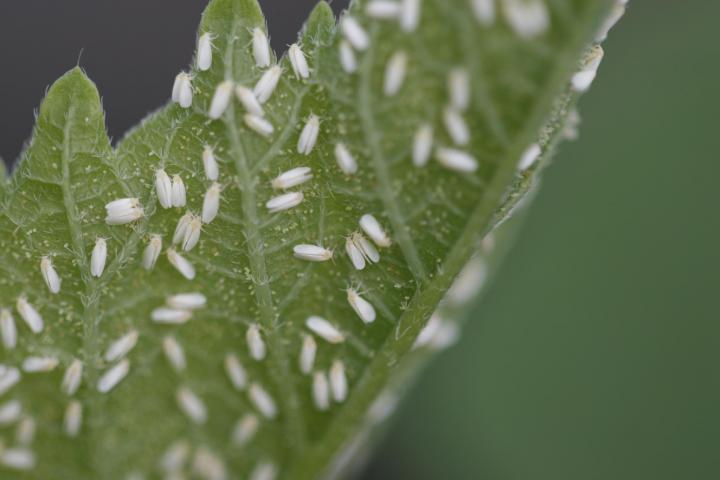Closely related to aphids, whiteflies are soft-bodied, winged insects. They can be found in almost any region, but they are so tiny that they are usually camouflaged.
Whiteflies are tiny, reaching only 1/12 of an inch, and are somewhat triangular in shape. They are often seen in groupings on the undersides of leaves. They are active during the day, so they are easier to spot than most other pests. Whiteflies are known to overwinter and reproducing throughout year-round in temperate climates.
All species can affect a large variety of plants. You’ll often see them in mid to late summer when the temperatures get warm; they are also common greenhouse pests.
Whiteflies tend to munch on ornamentals and summer vegetable plants, including eggplant, peppers, tomatoes, and okra. They also like sweet potatoes and anything from the cabbage family.
